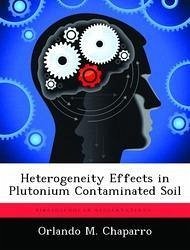In 1960 at the McGuire Air Force Base, New Egypt, New Jersey a helium tank ruptured causing a fire to ignite a nearby nuclear tipped Boeing Michigan Aeronautical Research Center (BOMARC) missile. During the fire the weapons grade plutonium (Pu-239, Pu-240, and Pu-241) ignited and was released into the surrounding area, due to both firefighting efforts, where high pressure water was used to put out the fire, as well as smoke that deposited plutonium as oxidized particles in the surrounding area (Cicotte, 2007). This study investigates the heterogeneity of the distributed plutonium contamination in the McGuire Air Force Base BOMARC missile site soil based upon direct measurements of Am-241, a decay product of Pu-241. The heterogeneity of soil samples taken from the BOMARC missile site was quantified using a conjugate counting method with gamma spectroscopy analysis. Plutonium was shown to be heterogeneously distributed in the BOMARC missile site soil.
Hinweis: Dieser Artikel kann nur an eine deutsche Lieferadresse ausgeliefert werden.
Hinweis: Dieser Artikel kann nur an eine deutsche Lieferadresse ausgeliefert werden.








